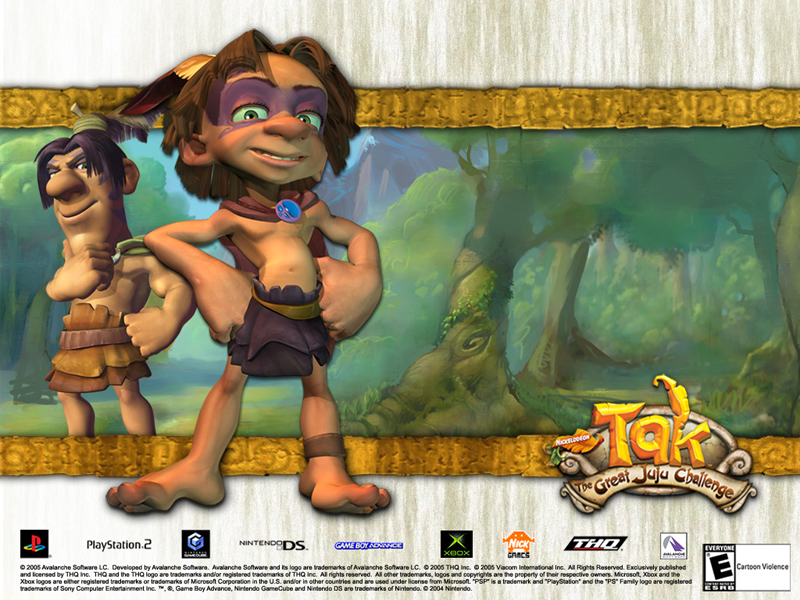 An expanded version of my Indian Comics Irregular essay Gun, Brave, and The Warchiefs:
An expanded version of my Indian Comics Irregular essay Gun, Brave, and The Warchiefs:
 An expanded version of my Indian Comics Irregular essay Gun, Brave, and The Warchiefs:
An expanded version of my Indian Comics Irregular essay Gun, Brave, and The Warchiefs:
Michael Sheyahshe (Caddo), author of Native Americans in Comics, also writes about Natives in video games. He published an article on the subject in Native Peoples magazine (Jan./Feb. 2007). Here's how he describes the early efforts to include Natives:
Searching for D.I.H.: Digital Indigenous Heroes
by Michael A. Sheyahshe
Let's get down to brass tacks: Native Americans are almost completely under-represented in modern video games. We complain about how few Indians we see on the small and large silver screens, yet we seem to forget that about other forms of popular media out there—such as video games—that target a young and impressionable audience and leave them with no idea who we are as Natives or what our viable culture is all about.
In video games, indigenous people are used mostly as set pieces or backdrops in order to offer setting information to a player. Don't believe me? Follow along with this brief overview of Native presence in video games over the years. While there are undoubtedly more Native American characters than those listed here, these are the ones that have caught a relatively significant amount of exposure and attention from the public.
1980s: Few Native characters are found in video games during this decade. This might tell us something about the level of awareness in popular culture towards indigenous people in the 1980s. At least the Italian community gets to gripe about Nintendo's Mario! We didn't have anyone to gripe about during this time. Video-game Indians in the '80s were typically backdrops in Western games, but never as a primary centralized hero.
One notable fiasco from the 1980s: Custer's Revenge (Atari 2600)—with a Native female character used only as a sexual object for a crude Custer look-alike—created by Mystique, which specialized in pornographic "Swedish Erotica" video games. While Native characters were not central ones, the pure offensiveness must be noted, since we are looking at Indians in video games.
1990s: The 1990s brought us the first Native American video game central hero in Turok: Dinosaur Hunter from Acclaim Entertainment. Sadly, Turok had many of the same stereotypes we come to expect: feathers, fringe, tracking ability, communing with mystic forces, etc. Yet Turok was the main character—finally!
Honorable mention in the 1990s goes to Nightwolf (Mortal Kombat 3), Chief Thunder (Killer Instinct), T. Hawk (Street Fighter), and War Wolf from NES's Werewolf. Only the latter of these characters was the central hero.
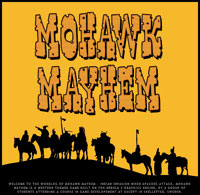
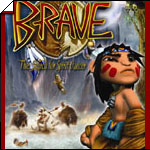
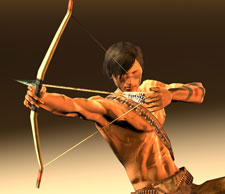
Into the new millennium
"After the millennium, Native representation in video games dwindled," writes Sheyahshe. Indeed, nothing much worth mentioning happened between 2000 and 2005.
But in 2005 and 2006, a few contenders emerged. Unfortunately, they were so stereotypical they earned a spot in the Stereotype of the Month contest:
Tak video game implies Native beliefs are primitive "juju"Another game apparently features a turtle as an Indian and bastardizes the Olmec and Toltec cultures of Mesoamerica:
by Nelson Rodriguez
Today's Xbox Live Arcade release is TotemBall, the tribal game featuring balls that is neither Zuma nor HoopWorld. The gesture-based game will cost you not a penny, but there is a catch.
There is no time limit on the free deal, but according to Major Nelson, if you do not own an Xbox Live Vision Camera, you are out of luck. TotemBall requires the camera, though it should be noted that there is a coop mode in the game that allows some use of a controller as well.
Funny thing about this release is that the game was said to have been available with the purchase of the Xbox Live Vision Camera packs last month. Some even claimed that the Vision Cam just came with an unlock code for TotemBall, but what does an unlock code for a free game look like?
In any case this Xbox Live Arcade release really only matters to people who already made the purchase, or folks waiting for a motion-based game before taking the plunge.
The members of the ancient Ptolmec tribe compose striking and innovative music in TotemBall. When they simultaneously discover gunpowder and barbeque, the explosive results scatter their musical totems across the breadth of the jungle!
Now Pterry the Pturtle must roll across mountains, islands, bridges, and through giant pinball games to retrieve the lost totems and bring the groovy Ptolmec music back to the party. Using your Xbox Live Vision camera, help Pterry recover all the musical totems while moving to the totem beat.
Move: Control Pterry through this musical platforming adventure using your Xbox Live Vision camera.
Cooperate: Join in with a friend to juggle your totem collection using the camera and a controller.
Roam: Use Free Play mode to practice and explore environments without affecting your progress.
Groove: Sway to the sounds of the music generated in-game by you!
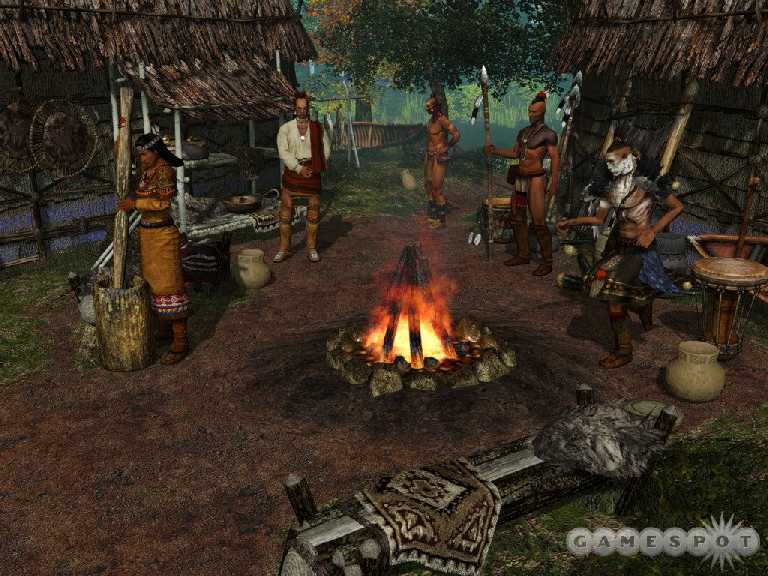
The coming of the Warchiefs
In the summer of 2006, a couple of serious video games featuring Indians finally appeared. One was Age of Empires III: The Warchiefs.
Age of Empires III : The Warchiefs
Impressions
The expansion for Ensemble Studios' RTS approaches.
August 29, 2006
by Steven Wong
This October, Warchiefs, the first expansion for Age of Empires III will release, almost one year after the core game hit the shelves. Luckily, the developers haven't been sitting still during that time. Warchiefs will offer a completely new perspective in conquering the new world — that of the Native Americans. Time to get those pens out, because here's a chance to rewrite history.
There will be three new Native American factions in Warchiefs, each with their own distinctive look and gameplay. The Iroquois is a well-rounded tribe with some European-influenced units like the light cannon, making them the easiest tribe to transition from the main game with. Their strong economy makes them the ideal choice for beginners. At first glance, they play very similarly to the other factions with one major difference. Native American tribes have access to a Fire Pit, which peasants can be assigned to dance around. Fire Pits can be set to provide specific bonuses, like stronger attacks for military units, faster healing rates for the Warchief, stronger economy, or faster unit creation. When used right, the pit can provide some pretty significant advantages over the European factions. The more peasants the player assigns to dance, the better the bonus becomes. However, while they're dancing, they're not gathering resources.
The Warchief works much like the European Explorer unit in that it can explore the land and grab up treasures. However, unlike the Explorer, the Warchief actually becomes more powerful over time and will provide bonuses to nearby military units.
In addition to new units, buildings, and Warchiefs, there will be a completely new single player campaign centering on the Black family. In the first act, you follow the exploits of Nathaniel Black who leaves his Iroquois village and eventually ends up fighting alongside Washington in the American Revolution. In this case, not only will the player have to work to repel European factions, but rival Native American tribes who have decided to side with the Europeans.
Other unique gameplay additions include a Trade Monopoly victory, where players have a chance to purchase a monopoly after taking over more than half of a map's trading posts. Rival players will have to destroy those trading posts before the timer runs out. However, one of the most intriguing gameplay options is Revolution, which is only available to European factions. Before reaching the Imperial Age, players have an opportunity to revolt. Doing so will convert all settlers into militia. From then on, the only thing they can from a Revolution Home City are military units and Fort Wagons. Unable to move on to the Imperial Age, and unable to create new settlers, revolting puts the player on a constant offensive.
Warchiefs looks like it will breathe some new life into Age of Empires III by offering a different perspective. Players will no longer necessarily be battling to conquer the new world. With Native American tribes, they will have a chance to defend it. The Native American tribes look distinct enough from the European factions to stand out and offer some diverse gameplay while preserving feel of AOE3. Where they were pretty much backdrop NPC's in the original game, they are now living and playable. The developers, Ensemble Studios, seem to be on the right track with Warchiefs, and we're looking forward to seeing how the other Native American tribes fit in to the big picture.
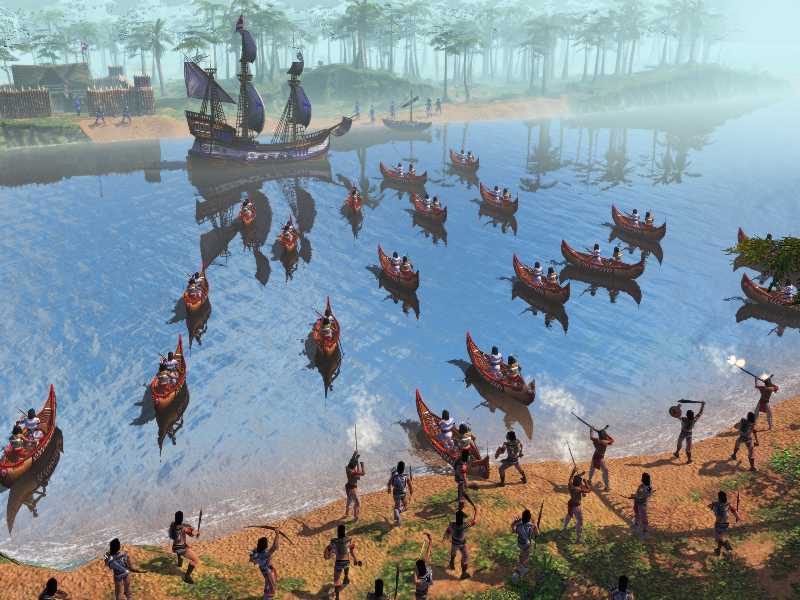
Age of Empires III: The WarChiefs (PC)
Publisher: Microsoft Developer: Ensemble Studios
Genre: Real-Time Strategy Release Date: October 2, 2006
ESRB: Rating Pending More Info on this Game
Expansion Pack for: Age of Empires III
By Allen 'Delsyn' Rausch | Aug. 8, 2006
The Native Americans get their due in the new expansion pack for Age of Empires III.
Spiffy
Three new Native American civilizations; WarChief units and Fire Pit buildings; new Revolution feature.
Iffy
Naval warfare still an open question; saloons may introduce an unwelcome random element.
As much fun as Age of Empires III was, it sometimes felt as if something was missing. Maybe it was the strangely subdued presence of the Native Americans. Ensemble's Bruce Shelley actually discussed this during an October 2005 conversation with GameSpy. The upshot, according to him, was that the team decided, for a variety of reasons, to focus on the European experience in the initial release. That'll change, however, in The WarChiefs, the upcoming expansion pack for Age of Empires III.
"One of the major goals for The WarChiefs was always to present these Native American civilizations," said Wallace Wachi, the game's producer, during a recent demonstration of the game. According to Wachi, there were just too many interesting and fun things the team wanted to do with Age of Empires III to not explore the American Colonial era from "the other side." After discussions with Microsoft's in-house committee of Native American employees, the ultimate recommendation came down to accurately representing the Native American culture and making sure that they could go toe-to-toe with the European civilizations on an equal strategic footing. The last part, Wachi notes, was never in doubt. "It wouldn't be much fun if a player couldn't win with the three new civilizations."
Age of Empires III: The WarChiefs introduces three new players into the game's strategic mix: the Iroquois Confederacy, the Sioux Nation and the Aztec Empire. In the version I played, only the Iroquois were available, but even my limited time with them quickly demonstrated the different strategic "feel" of the new Native American tribes. First, the Native Americans tend to lean more on their WarChief unit. These units take the place of the Explorer unit and are much more versatile than their European counterparts. Not only do they have the standard ability to explore the map and uncover hidden treasures, but as the Ages advance, the WarChief develops an aura that gives a substantial boost to those units next to him. The Iroquois WarChief offers a health bonus, the cavalry-focused Sioux get speed and Aztec warriors near their WarChief get bonus experience for everyone they kill. Wachi tells us this increased utility isn't a coincidence. "One of the things we noticed in playing was that by the third age, Explorer units tended to get left to die. We wanted to change that."
The other key element of Native American strategy is the new Fire Pit building. While its appearance will vary based on the actual culture, this religious ritual center can host up to 25 gatherer units that will perform a variety of tribal dances. Each dance imparts specific global bonuses to the player, although the strength of the bonus is dependent on how many dancers there are. Bonuses range from the obvious, like more unit health and damage, to the more subtle, like experience multipliers and production speed boosts. The trade-off for these bonuses is that gatherers dancing in the Fire Pit aren't out collecting resources or building stuff.
The Fire Pit's importance was emphasized during "The Rescue," a new mission in the game's 15-scenario single-player campaign. The Rescue is an involved multi-stage assault in which the player must continually take and secure ground while protecting settlers in order to build up enough strength to assault a fortified position in a cave. In the mission, the player is continually juggling between the need to rebuild armies, defend against counterattacks, and build up assault forces to take the next piece of real estate. Without continually switching the bonuses available from the Fire Pit, the scenario becomes prohibitively difficult. During my games, it eventually became a bit of a rhythm: fertility dance to help create new cavalry and infantry, damage-to-buildings bonus when taking down the prisons to rescue settlers, and health bonus to soldiers when repulsing a counterattack. Wachi himself pointed out that it is possible to win without using the Fire Pit, but not very easily, and certainly not against a human opponent in multiplayer who knows what he or she is doing.
The one thing that hasn't changed much (beyond the cosmetics) is the Home City dynamic. All three of the Native American civilizations have a home city, but only the Aztecs have an actual "city." The Sioux and the Iroquois, on the other hand, have Tribal Councils that consist of a Messenger, War Leader, Shaman, Wise Woman and Chief. Each of these leaders corresponds to a building type in European cities and offers the possibility of getting similar "shipment cards." The Shaman, for example, replaces the church in offering spiritual bonuses such as hit point boosts and new dances for the Fire Pit, while the War Leader offers more concrete help in the form of instant soldiers and trained bears to use in combat. The only down side of the "Tribal Council" so far is that it may water down one of the highlights of leveling up a city in the original game: unlocking cute graphical touches such as a little Jack the Ripper for the streets of London. It's difficult to see how Ensemble can offer the same kinds of fun enhancements for a set of five people standing around a fire in Tribal Council.
Ensemble hasn't forgotten about European players, although most of their enhancements are global rather than civilization specific. Every civilization now gets the ability to build a saloon that can be used to hire a random selection of mercenary units. This sounds interesting, but depending on how it's implemented, may introduce an unwelcome random element into multiplayer matches. The game also offers the opportunity to sign treaties that allow for 10- to 40-minute "no-attack" periods in multiplayer games — and no, European players cannot violate their treaties with Native American players.
The big news for European players is the ability to declare a "revolution." Rather than aging up to the Imperial Age, European players can instead break away from their home city and gain access to a new revolutionary city that can only ship militia, Gatling guns, ironclads and unlimited fort wagons. They'll also have all their settler units turn into militia units, and remove the ability of any other player to declare revolution. The bad news, however, is that revolting players lose the ability to train new settlers and gather further resources, making a revolution the kind of move that'll either blow away a competitor or be used as a last ditch effort to survive. Either way, it should be interesting to see how this dynamic changes the complexion of multiplayer.
All in all, The WarChiefs looks like a meaty, impressive addition to Age of Empires III. Questions remain, of course. Naval warfare remains an open issue as there's simply no historically accurate way for a war canoe to stand up to a war galleon, and the version we played didn't have enough naval warfare to find out how Ensemble intends to address this. Nonetheless, based on what we've seen so far, Ensemble's own track record, and the way too many games we've already played with the Iroquois Confederacy, we'd be surprised if Ensemble hasn't already come up with a novel answer. Age of Empires III: The WarChiefs will be available in October — and it's about time, because the natives are getting pretty restless.
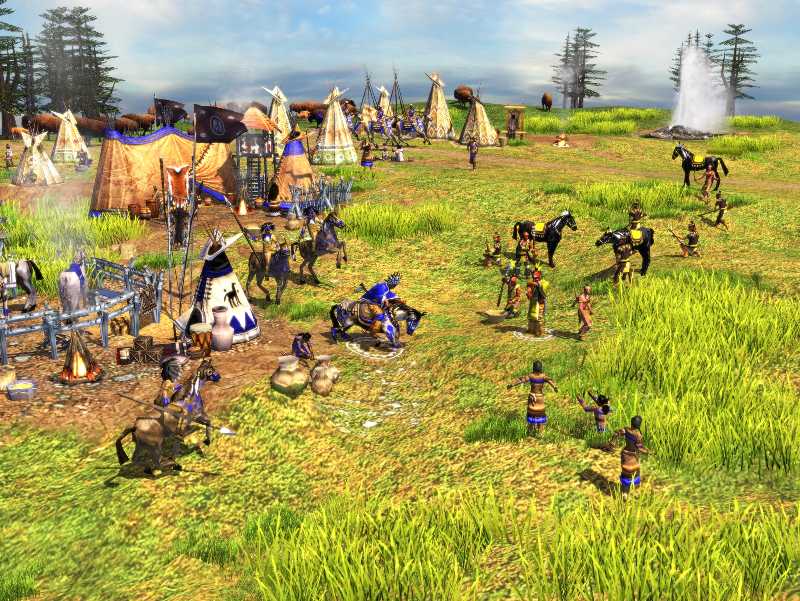
Lead designer Sandy Petersen returns to answer our latest questions regarding the expansion pack to last year's hit real-time strategy game, Age of Empires III.
By Staff — GameSpot
Posted Jul 10, 2006 4:59 pm PT
As the latest chapter in the best-selling real-time strategy series, Age of Empires III explored the age of colonialism when European powers settled the Americas, and then fought it out with one another. You take command of any of the major powers and attempt to conquer the New World the old-fashioned way by collecting resources, constructing buildings, and raising armies. Microsoft and Ensemble will explore this era further with Age of Empires III: The WarChiefs, the upcoming expansion pack that not only adds in new content for the existing European civilizations, but also lets you play as the Native Americans for the first time. For the latest details, we caught up with lead designer Sandy Petersen, and he filled us in on some interesting new features. Some might even call them "revolutionary." The WarChiefs is scheduled for release later this year.
GameSpot: We understand that the new WarChief unit is both an explorer and a fighting unit, based on a real-world historical figure. How many WarChiefs does each Native American tribe get, and how were they chosen? We know that the WarChief unit stems partly from the feeling that the European explorers in Age of Empires III quickly became obsolete over the course of the game, so what abilities does this new unit possess, and how will they add to the game?
Sandy Petersen: Each tribe gets only a single WarChief, and while they are based on the actions of famous historical figures, the WarChief unit itself, like the European explorers, can be named by the players. We do have historical personalities for the various natives of course, as we did with the Europeans. Each nation's WarChief has a sort of leadership effect, like an aura, which boosts all nearby units in a manner specific to that nation. The Sioux WarChief, for instance, increases nearby units' speed. WarChiefs also have other special abilities, which are highly useful. Early in the game they have the nature friendship ability, which lets them tame treasure guardians, such as bears, wolves, or even outlaws. The native nations have technologies and tribal council shipments to further boost the WarChief.
GS: Native American factions don't have home cities like European civilizations, but they do have tribal councils. What are the differences between cities and tribal councils? How are councils limited, and what unique abilities do they possess that cities don't?
SP: Tribal councils function quite similarly to cities, though, of course, they have very different shipments. For instance, the Sioux can send herds of buffalo for their hunters. The Iroquois have special combination shipments based on each of the six Iroquois nations. For example, the Onondaga nation ships tomahawk warriors along with crates of wood.
GS: Tell us about the five new minor Native American tribes in the game. We understand that one of them is the Klamath from the Pacific Northwest, but who are the others? Are they treated like Native American tribes were treated in the core game, in that they're basically outposts with which you can set up trading posts and unit recruitment points?
SP: The minor tribes are treated exactly as the existing Native Americans in Age of Empires III. Not all of the minor tribes have been announced yet, but two that I'd like to mention are the Cheyenne and the Huron.
GS: Aside from covering a different area in the western half of the Americas, what are some of the differences in WarChiefs' maps from those of the original game? Are they bigger, more complex, and/or more detailed? How many new maps will the expansion offer?
SP: We have quite a few new maps in the expansion. In each case, we've tried to add some new interesting strategic feature. The Andes map has a large cluster of native settlements at one end that can add great power to the conqueror. The Northwest Territory map is interesting in that most of the action takes place on the mainland, but there is a large island off the coast that can support a large base, so players who "go navy" might be able to parlay this into an advantage.
GS: The existing European civilizations will each receive new content. What sorts of additions are being made, and how will they change the game? What's your favorite new European content and why?
SP: The Europeans are getting an enormous amount of new material. There is a special new feature for European civs only. It is a new way to win the game and we're very excited about it. Revolution is an alternative to the game's Imperial Age. If you are in the fourth age and are a European nation, you can spend resources to research the revolution. When you do so, you get to choose from two different historical New World revolutionaries, such as Simon Bolivar, Toussaint Louverture, or Father Hidalgo. Each revolutionary hero provides a different advantage.
When your revolution is complete, your flag changes to a new one, your home city is replaced with a revolutionary city (with new shipments!), and all of your settlers transform into colonial militia. For the rest of the game, you can no longer train settlers, and your economy basically slides to a standstill. However, your military power is enormous. Once one side revolts, the other side, by definition, become the imperialists and can't revolt.
Rob's comment
Treating Native people as contemporary with and equal to Europeans is a huge step forward. This must be the only game that has conveyed a sense of Native history with anything approaching accuracy. But several elements remain stereotypical:
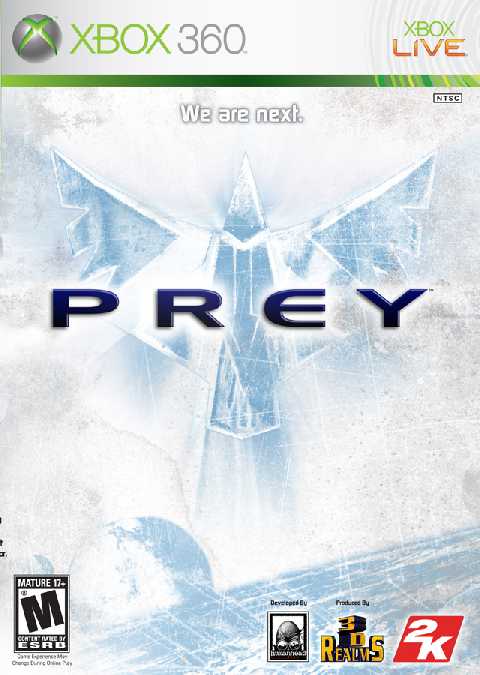
The first Native shooter
Michael Sheyahshe continues his narrative:
Age of Empires III and a new game called Gun contain indigenous characters, but they lack centralized Native heroes. But, have hope! A new video game has emerged with a Native American central character: Prey (http://www.prey.com).
Brought to you buy some of the same people that gave the world Duke Nukem, Prey is what the video-game industry calls a "first person shooter" (FPS). FPS action takes places from the main character's perspective and, as the designation FPS suggests, there is a lot of shooting. The central character, Tommy Tawodi (a Cherokee), is a reluctant hero, as Prey's tagline makes clear: "Earth's savior doesn't want the job."
Why choose to make the game tribal specific (Cherokee)? Why not make it Caddo, for that matter? Tim Gerritsen, Chairman and CEO at Human Head Studios, Inc. states, "We found that the Cherokee were both one of the most widely recognized tribes by the public at large, and that they had one of the largest written volumes of mythological and traditional histories. There are so many tribes with so many stories to tell, but in the end, we had to choose one."
The game itself is terrifically innovative and runs on the Doom3 engine (which translates into "cool" for those gamers out there). But coolness aside, how does Prey portray Native people? Tommy Tawodi conforms to a few all-too-common stereotypes:
The game does offer some positive, stereotype-busting elements. Tawodi does not wear a feathered headdress or fringed buckskin. He is dressed in modern clothes, a fact that accomplishes two important things: 1) it allows people to see that not all Indians dress like they're acting in a bad Western; and 2) dressed in modern clothing, the Native person—and by extension, Native culture—is seen as existing in modern times.
In addition, Human Head Studios relates that game features Michael Greyeyes and Crystal Lightning for its voice actors. Bonus!
There is still some sense of implied spirituality-just-by-being-Native, yet the games uses this notion as one of the most innovative ways to maneuver through the game. OK, so he uses a bow and arrow—but, this is not necessarily a bad thing.
Would any self-respecting "gamer" want to see a Japanese Samurai game without a really cool sword? No. So why limit our Native characters by not letting them have weapons that were good enough for our ancestors?
In Prey, Tawodi wields a vast arsenal of downright righteous alien weapons. Alien? Oh yeah, did I mention that this character is battling horde-after-vicious- horde of alien creatures? That is, as they say, "freakin' sweet!"
So, here's the bottom line: indigenous people have been out of the spotlight for a long time (in video games), and is high time that we had some real butt-kicking Native heroes out there to look up to. The time has come for us to have an indigenous central figure that is not weighed down with so many negative stereotypes that no one, especially our Native youth, can look up to them.
While it may not be perfect, Prey seems to be on the right track. The game, its character, and its share of the market are best expressed by Scott Miller, 3D Realms executive: "Prey is entirely serious in tone, and respectful of the subject material. … After looking at the Turok games, we felt like there was still a wide-open market for a strong Native American character. … In other words, we didn't just want to create a superhero with made-up powers, so we turned to Native Americans mythology as our foundation, and created a character to take advantage of this foundation."
Even Michael Greyeyes feels this project is special: "Hollywood (and by inference America) typically relegates our different indigenous cultures either into a single pan-Indian construct of some type (radical AIM protester type; slick, corporate, anglicized casino businessman type; or, most commonly, as a historical figure—typically from a Plains culture…Therefore, it is not surprising that I jumped at the chance to voice Tommy, since Prey is [so] contemporary."
My hope is that there will be more and more games that not only showcase us as heroes, but that do so in a respectful and genuine attitude. Who knows? Perhaps if more of us got involved in the video-game industry, we could take it over and make it ours. Isn't that what we did with European glass beads? Made the very idea of them seem somehow Native? Perhaps we could do the same with this new digital medium—make it ours.
Portions of this article originally ran in the Jan./Feb. 2007 issue of Native Peoples magazine (www.nativepeoples.com).
More on Prey
Article Launched: 7/19/2006 01:21 PM
'Prey' showers gamers with alien action
Redmond Carolipio, Staff Writer
Inland Valley Daily Bulletin
I'm not an expert on Cherokee lore, but I'll bet it doesn't include getting puked on by an alien ship.
That's what happens in the world of "Prey," a stomach-churning, disorienting and ultimately thrilling experience that matches the mythos of ancient Indian legend against the twisted horrors of alien abduction.
You play Tommy, a Cherokee garage mechanic who isn't a fan of reservation life, or being a Cherokee, for that matter. We meet him in a bar and quickly learn his views clash with those of his girlfriend, Jen, and his traditional grandfather, Enisi.
The bar scene helps the player get used to the first-person control scheme in addition to offering a somewhat bleak (in Tommy's view) outlook of the reservation.
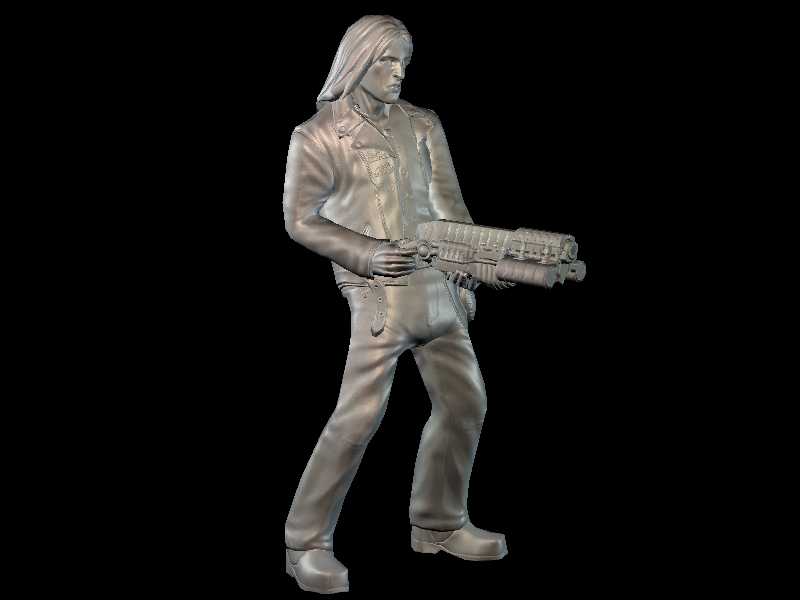
With old rock music bouncing off the walls ("oooh, Barracuda") and the bar's only two patrons trying to hit on Jen, we get a taste of Tommy's somewhat spiteful personality. Upon seeing some of the bar's gambling machines, Tommy utters, "worst Indian casino EVER."
You also get a taste of the game's melee combat, as Tommy has to use his big mechanic's wrench to beat down the two patrons, who get a little violent.
What follows is the actual abduction scene, where you hear emergency broadcasting on the TV, see the lights black out and feel the bar start to shake.
If you look out the window, you see a truck get sucked up by green light, followed by the roof of the bar, your grandfather and girlfriend, and eventually yourself.
The early sequences illustrate how the game's atmosphere walks the line between wonder and terror.
For instance, you and your loved ones get carted around the alien ship by an automated conveyor system for a few minutes. You see the Earth from space, strange machines and creatures.
But during this tour, you also hear people screaming, even hysterically praying out loud. The ship comes across as an unholy place, emphasized by Tommy telling Jen to stop her own praying because "if there's a great spirit, he's not here."
With the aid of an unknown stranger, Tommy is set free, leaving him to try and track down Jen and his grandfather. Players assume control from here and start to explore the ship.
Simply put, the alien craft is foul.
First, there are the sights, many of which deal with bad things happening to other captured humans. There's a machine that involves retractable spikes that sounds like a food processor. You also stumble across a school that was beamed up, only to find that the students aren't quite dead.
The ship is also alive, so for every sliding metal door or moving platform you find, you'll also encounter entryways that resemble bodily openings (can't tell you which ones), along with churning organic tubes and squirming "valves" that vomit chunky acidic waste.
Beyond the goo, the game also finds ways to warp both the player's perspective and sense of reality.
You'll find various "portals" that lead to different areas scattered throughout the ship. Many of them are in midair, but some can also be found in random arches — or even inside a box or two. Some are placed at strange angles, and it's up to the player to figure out the best way to reach them.
The ship also features technology that allows the player to walk on walls and ceilings, as well as alter gravity in certain areas. It's insanity for the eyes at first, but it also brings a surreal quality to the gameplay.
You'll see enemies fall sideways, or even up, and some area puzzles require deft understanding of gravity manipulation and physics — one "box" puzzle in the game is especially harrowing.
I found the visual confusion a refreshing departure from the predictable past instances of "advanced alien tech" where someone seeing it for the first time immediately figures it out. You're on an alien ship — it's supposed to be weird, isn't it?
However, it's not just Tommy and his wrench taking on the aliens. Players have access to an arsenal of living weapons with varying capabilities.
Your first gun is a rifle, but eventually you get to use stuff like grenade launchers or an automatic cannon — which is actually a severed arm of an alien beast.
But what truly separates Tommy from other angry gun-toters is a cadre of abilities based around Indian legend.
"SpiritWalk" enables the player to leave their own body and travel around in spirit form. With an ethereal bow and arrow as your weapon, you can bypass force fields, see invisible paths and scout out danger.
Then there's "DeathWalk," which essentially means you can fight your way back to life when you die.
It's a timed minigame, where players have to use the spirit bow and arrow to shoot ghostly birds before your body descends into a dark hole in the middle of a barren valley. The more birds you shoot, the more health you have when you spring back to life right at the spot where you died.
Tying all of these elements together is the story, which is good enough for me to not spoil it here. It runs the gamut of emotions, starting with fear, tossing in some sacrifice, and ending with a swelling of native pride for Tommy.
I thought this game was a little overhyped coming in, but its combination of atmosphere and story won me over. And that's a pretty big feat, considering I got sprayed with waste within the first hour.
VIDEO GAME REVIEW: PREY
Publisher: 2K Games
Developer: Human Head Studios
Rated: M for Mature (it gets pretty gross)
Platform: Xbox 360, PC
Rating: 3-and-a-half out of 4
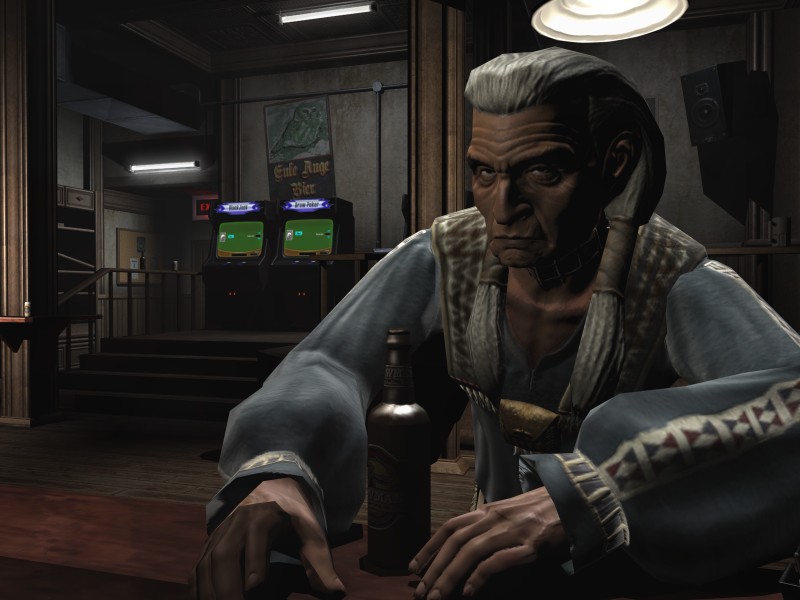
Cool 2 Use: Video Game Review
BY MONTY PHAN
Special to Newsday
July 25, 2006
You won't find many video games that take place on an Indian reservation. The game Prey does — for, oh, about 10 minutes. And then Tommy, the main character, gets sucked into a giant alien spacecraft.
The irony is that Tommy, a Cherokee, was just saying how he wanted a new life, off the reservation. Well, he gets his wish — except that it involves skulking around a dark, bio-mechanical alien ship in an effort to save his girlfriend and grandfather, who also were abducted.
As a first-person shooter, Prey may not win many awards for originality, but it's got enough going for it to keep fans of the genre interested. And, yes, in case you're wondering, there's a reason for Tommy's Native American ethnicity: Early in the game, he learns how to "spirit walk," which allows his spirit to leave his body and access areas his physical presence cannot, all while remaining undetectable to surrounding enemies (as long as Tommy doesn't attack them first).
As a spirit, Tommy is equipped with a bow, which is handy for sneak attacks (souls of fallen enemies replenish his spirit meter). Once the spirit walk power is learned, anytime Tommy dies, he's sent to "Death World," where red- and blue-colored wraiths fly around you. You're given about 10 seconds to shoot them with your bow — the red ones refill Tommy's health meter while the blue ones replenish the spirit power — and then you're transported back to the spot you had just before dying. For those who aren't obsessive about saving their progress, it's a nice touch.
Another major differentiation from other first-person shooters is Prey's use of gravity. Certain tracks, when activated, allow you to walk along walls, so that some firefights will occur with you aiming at upside-down targets. Other areas have sensors that, when shot, cause the room to rotate; some puzzles require you to figure out how to rotate rooms to get from Point A to Point B.
Finally, to get around the ship, you'll have to activate portals. In reality, though, it sounds more exotic than it is. The portals essentially are just fancy doors, and even when there's more than one in a room, it's pretty easy to figure out what to do.
The game also supports online play, via the Xbox Live subscription service.
Bottom line: While running around shooting enemies in a dimly lit maze may not be the most original of premises, Prey tweaks the formula enough to consider it an above-average effort.
PREY. Rated "mature." For PCs and the Microsoft Xbox 360 (the version reviewed here).
Copyright 2006 Newsday Inc.
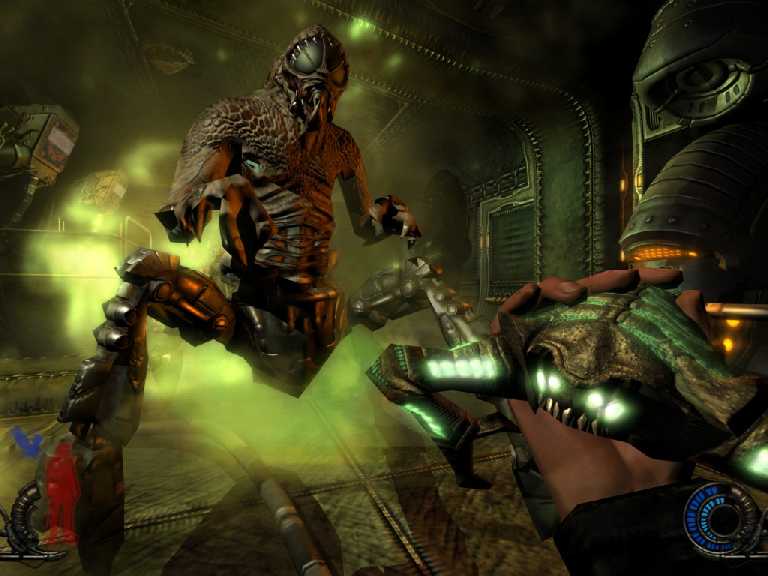
Prey should be called Dances With Tedium.
By Chris Ward
Published: August 3, 2006
Native American heroes are a rare commodity in videogames. Turok: Dinosaur Hunter, released a decade ago, is the most prominent example.
Now Turok finally has company.
The best way to describe Prey is "Doom meets Cherokee mysticism." And while most critics are fawning over this first-person action/horror title, don't believe the smoke signals. Prey's characters have promise, but the game itself should have been called Dances With Tedium.
Tommy is a restless Cherokee youth who desperately wants to leave the reservation. He sees his grandfather's ancient beliefs as pure hokum and can't understand his girlfriend's commitment to her spiritual roots.
Then, without warning, flesh-eating aliens abduct everyone on the reservation, along with most of America. In one unsettling scene, the populace is strapped to conveyor belts and disemboweled.
Now it's up to the reluctant Tommy to save his girlfriend, his grandfather, his Earth, his heritage, and his own hide . . . with just a little help from alien weaponry, of course.
The weapons themselves are standard issue, but with an extraterrestrial twist. Instead of grenades, you'll throw exploding bugs. Deadly acid takes the place of a shotgun, and shooting a machine gun means blasting rapid-fire goo out of a larva's hind end.
The game's mind-bending use of gravity and logic makes this run-of-the-mill shooter somewhat unique. Otherworldly technology lets Tommy turn "up" into "down." Flick a switch, and the ceiling is the floor. If M.C. Escher and Dr. Seuss ever partnered on a videogame, this would be the disorienting result.
But once this gimmicky eye candy wears off, true innovation is ignored in favor of lazy game play.
Early on, your grandfather teaches you how to "spirit-walk." With the press of a button, your transparent soul leaves your physical body to enter areas you couldn't before.
Where the game Geist first incorporated ghostly, out-of-body experiences in its engaging puzzles, Prey's "spirit-walking" usually means phasing through barriers to unlock things. By the end, spirit-walking is duller than a wigwam's interior decor.
The ghost of a hawk (your "spirit guide") offers unnecessary hints by perching near important clues. When the hawk finally bites it (yes, as a ghost — don't ask), Tommy's cry of "Talon! NOOOOO!" will evoke guffaws, rather than the sorrow the game-makers intended.
The action is awful for another reason: You can never, ever die. Ever. When blown to bits or tossed on spikes, your body goes to a Cherokee limbo land. After recovering your health, you're dropped back into the fray.
You're in perpetual "God Mode." There's no fear of failure as you muscle your way though firefights without really earning victory. Whose idea was it to turn Native American mysticism into Groundhog Day with a gun?
Prey strives to be epic and fails, but the little things give the game some atmosphere. The reservation bar has playable slot machines, blackjack, and even Pac-Man-type minigames. ("Worst. Indian Casino. Ever," Tommy quips.) It also has a working jukebox, featuring Judas Priest, Ted Nugent, Heart, and more. It's nice to know that "Cat Scratch Fever" survives the alien apocalypse.
After the game's disappointing and preachy finale, a bonus teaser scene promises that "Prey will continue . . ."
That's super, but like the game's hero, I've got reservations.
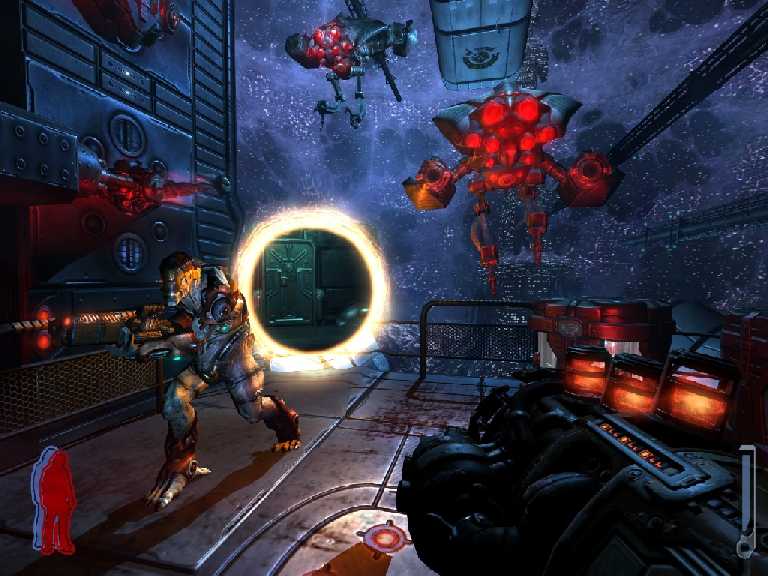
Thursday, August 24, 2006
By Cindi Lash, Pittsburgh Post-Gazette
Reviews are out of four stars.
"Prey"
When a game begins in the grungy men's room of a tired bar, it's a pretty safe bet that you're not in for a pretty experience.
Turns out that rest room, which we suspect was last cleaned in 1957, is one of the more benign places you'll fight to get out of in "Prey," a first-person shooter with a novel premise but a few flaws that hold it back from realizing its promise.
"Prey" (2K Games; PC, X360; $49.99 to $59.99; Rated M) runs on the same engine used in 2004's excellent "Doom 3," and the similarities are immediately apparent.
The games have much the same panic-inducing look and feel while you're exploring their terrifying environments and fighting off otherworldly creatures. If you enjoyed being scared out of your wits by the terrific but terrifying visuals of "Doom 3," you're likely to find "Prey" will push those same shudder-inducing buttons.
"Prey" tells a fresh story — imagine that, in an industry that so often recycles the same tired ideas — and uses it well to drive the game action. You play as Tommy, a frustrated Cherokee Indian who is desperate to flee the reservation that he sees as a dead-end world.
Tommy would be long gone but for his sweet girlfriend, Jen, who balks at the idea of turning her back on family and traditions. He tolerates but tunes out his wise grandfather, who tries to imbue him with wisdom and knowledge of the tribe's old ways.
Tommy scoffs at his grandfather until the night a mysterious light fills the sky above the bar. Cars parked outside begin hurtling toward the sky. Tommy, Jen and Grandfather are sucked upward behind them.
In a development that is a tad too derivative of "War of the Worlds," they awaken to find themselves inside an alien ship and strapped to machinery that, to their horror, is about to destroy them and drain their essence. But a creature slinking below them inexplicably frees Tommy to fight to save his loved ones.
Initially Tommy is armed only with a wrench he was clutching in the bar. Gradually he acquires other weapons and learns to use items and even living creatures he encounters — the exploding possums are a hoot — to fight.
Combat, as in "Doom 3," is unfortunately just ordinary. Killing the enemies you encounter is not particularly arduous and does not require much in the way of cunning or tactics. You shoot, shoot, and shoot some more. Load times also are surprisingly long.
But graphics are stunning, and you're likely to be impressed by the sights, sounds and capabilities of the organic environments as you explore. Gravity no longer is a problem, and you can walk on walls or ceilings and pull off deeds that, back on Earth, would have been impossible.
The ship also turns out to be a living thing that presents its own set of threats to Tommy's welfare. It's packed with portals that allow Tommy to slip in and out of new settings but also allow enemies to emerge abruptly.
Despite his earlier attempts to slough off his Indian heritage, Tommy learns to tap his ability to slip out of his body and become a spirit to evade enemies and perform other tasks. He also acquires a helpful hawk companion.
When he's overpowered in combat, Tommy doesn't die or get sent back to start anew. Instead, he passes into a death realm where he can restore his health and return to the place from which he was dispatched. This, to us, seemed odd and too easy, almost like cheating. It also made the game go by faster, which was not a good thing.
We beat it in about 10 hours, and then felt slightly let down. We'd have been happy to devote more time if the tradeoff had meant more opportunities to explore this curious world.
Beating the game allows you to unlock a more difficult single-player version, but you'll find few surprises there. Ditto for multi-player mode. Still, we weren't sorry to have blown a chunk of a weekend on a game that immersed us in a well-conceived story illustrated with rich visual treats.
More video games featuring Indians in the Stereotype of the Month contest
Aztecs game cover shows scantily-clad woman wielding axes
Natives in Warchiefs game dance around a fire to gain power
More on video games featuring Indians
Custer's Revenge
RezWorld on YouTube
Sick of magical Cherokees
Colonization the video game
Coushatta's 3D environment
Strong, silent type in Shadow Hearts
Seven Cities of Gold video game
Brave on the Wii
Nightwolf in Mortal Kombat
Turok game isn't satisfying
New Turok video game
Tak on Nickelodeon
Native video game in development
Generic Indian video game
Another stereotypical video game
Another bad video game
Video game enhances Indians
More on Prey the video game
Cherokee-based video game
Guns don't kill people, Gun players kill people
Brave and Age of Empires III
Related links
The evidence against media violence: video games
Comic books featuring Indians
TV shows featuring Indians
|
. . . |

|
All material © copyright its original owners, except where noted.
Original text and pictures © copyright 2007 by Robert Schmidt.
Copyrighted material is posted under the Fair Use provision of the Copyright Act,
which allows copying for nonprofit educational uses including criticism and commentary.
Comments sent to the publisher become the property of Blue Corn Comics
and may be used in other postings without permission.